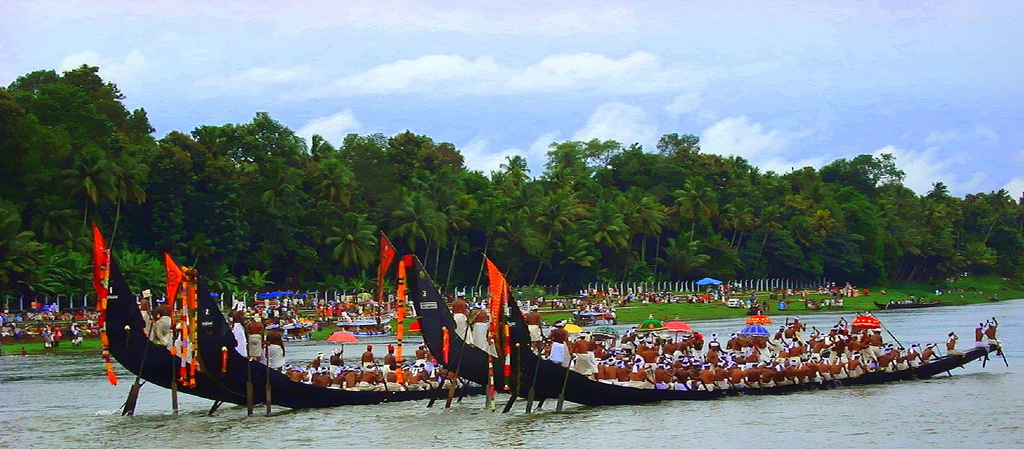The Snake Boat Races of Kerala: A Spectacular Water Sport Tradition
Kerala, the southernmost state of India, is renowned for its lush landscapes, serene backwaters, and rich cultural heritage. Among its many cultural traditions, the snake boat races stand out as a spectacular and thrilling event that draws visitors from around the world. In this article, we’ll explore the tradition of snake boat races in Kerala, their history, significance, and the excitement they bring to the region.
The Origin of Snake Boat Races
The tradition of snake boat races in Kerala can be traced back to the early 14th century. It is believed that the Maharaja of Travancore, inspired by the sight of his subjects rowing their boats, initiated these races as a form of entertainment. Over the centuries, these races evolved into grand events that became integral to the cultural fabric of Kerala.
The Boats: Chundan Vallams
The boats used in snake boat races are known as “chundan vallams,” which translates to “snake boats” in Malayalam. These boats are long and sleek, resembling the shape of a snake. They are often more than 100 feet in length and can accommodate up to 100 rowers. The design of chundan vallams emphasizes speed and balance, with a narrow profile and a raised prow.
Each boat is meticulously crafted by skilled artisans, and the materials used include a combination of wood, coir (coconut fiber), and resin. The most crucial part of the boat is its team of rowers and helmsman, who work in perfect harmony to propel the boat forward.
The Races: A Thrilling Spectacle
Snake boat races are organized as grand events, with multiple participating teams representing different villages and regions. The most famous and competitive among these races is the Nehru Trophy Boat Race, held annually on the Punnamada Lake in Alappuzha (Alleppey). This event attracts thousands of spectators, including tourists from all over the world.
The races are not just about speed; they are also a test of the rowers’ synchronization, strength, and endurance. The boats are adorned with colorful silk umbrellas, and the rowers wear traditional attire as they race along the water. The races are accompanied by vibrant music and the cheers of enthusiastic spectators.
Significance and Festivities
The snake boat races hold immense cultural and social significance in Kerala. They are often associated with religious festivals and temple rituals, with the winning team receiving honors and praise from the local community.
The most prestigious snake boat race, the Nehru Trophy Boat Race, is named after India’s first Prime Minister, Jawaharlal Nehru. It was inaugurated in 1952 when Nehru visited Kerala. Since then, it has become an annual event that celebrates the spirit of Kerala’s backwaters.
Tourist Attractions
For tourists, snake boat races offer a unique and exhilarating experience. The vibrant atmosphere, the sight of massive chundan vallams racing on the water, and the sense of competition make these events unforgettable. Many tourists plan their visits to Kerala around the snake boat race schedule to witness this remarkable tradition.
The snake boat races of Kerala are not just water sports events; they are a cultural spectacle that reflects the rich heritage and traditions of the region. These races continue to be a source of pride for the people of Kerala and a captivating attraction for visitors from around the world. If you have the opportunity to visit Kerala during the snake boat race season, don’t miss the chance to witness this thrilling and culturally significant event in person.
Champakkulam Boat Race:
The traditional annual boat race of Kerala begins in July at Champakulam .This festival is known as “Moolam Vallamkali”. “Moolam signifies Malayalam Nakshathram Moolam in the month of Mithunam.This is the much oldest Boat Race in Kerala.
Aranmula Utthrittathi Boat Race
The most famous Aranmula Snake Boat Race is conducted on the Uthrittathi day of the Malayalam month Chingom(August – September)in connection with the national festival of Onam.This boat race is held to commemorate the crossing of the river by Lord Krishna on that day. The deity is supposed to be in all boats that take part in the carnival and all of them are expected to arrive at their destination simultaneously. Thus no element of competition in the Aranmula Boat Race as in other regattas held in the Kerala State. The race is not conducted to win any trophy or prize. The crew regard the occasion as one for rejoicing and merry- making and cheerfully row up and down the river to the tune of songs. Even though the festival is of Hindu origin and is associated with the Parthasarathi
Temple, it is an all- community affair and participants include members of all classes and communities living in and around Aranmuala.
Payippad Jalotsavam
It is a three day annual fiesta on the Payippad Lake which is 35kms from Alappuzha.It commemorates with the installation of the deity at the Subramanya Swamy Temple, Harippad.The story is that the people of the village decided to build a temple with Sree Ayappa as the presiding deity. After the temple was ready, they had a vision directing them to a whirlpool in Kayamkulam Lake they would find the idol of Sree Subramanya, which was to be installed at the temple. Accordingly, the elders of the village with divers and swimmers rowed to the spot and found the idol, which was escorted, back ceremoniously by devotees from the entire region in colorfully.

